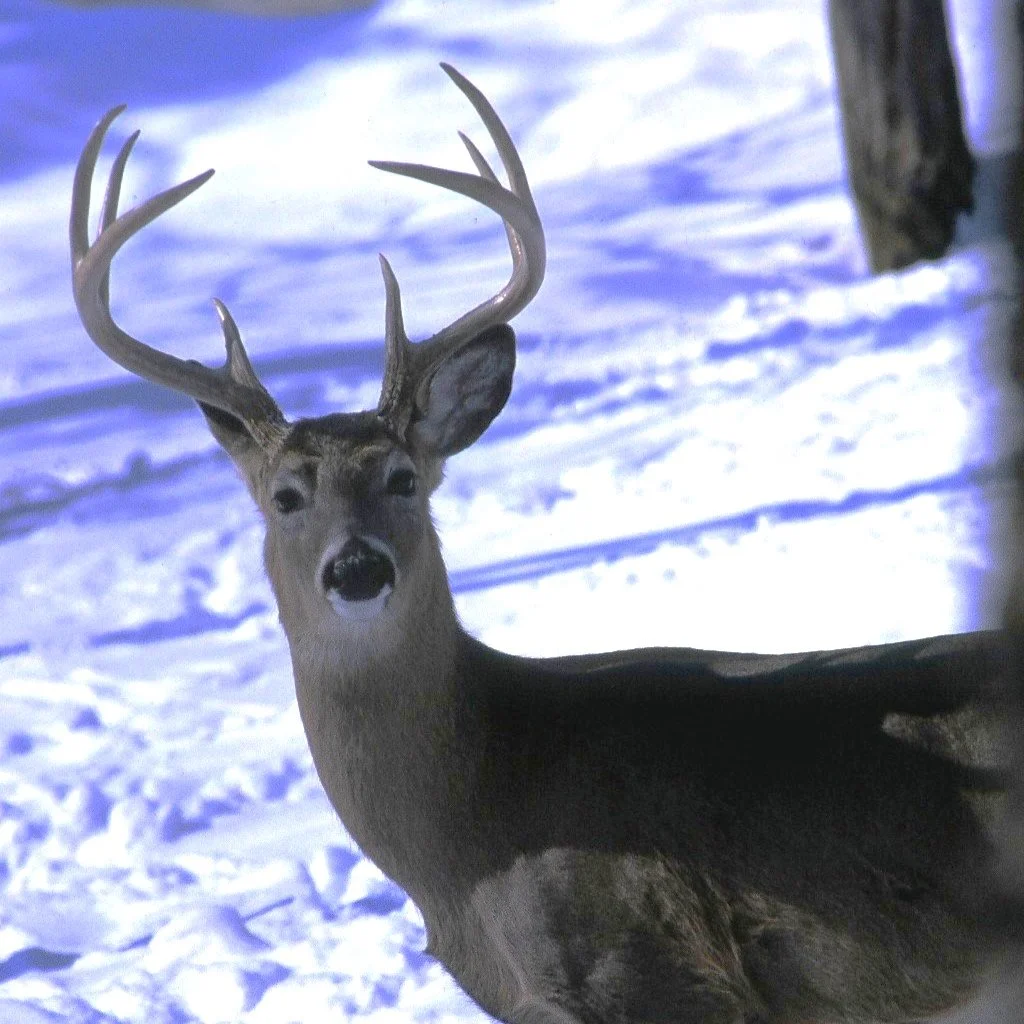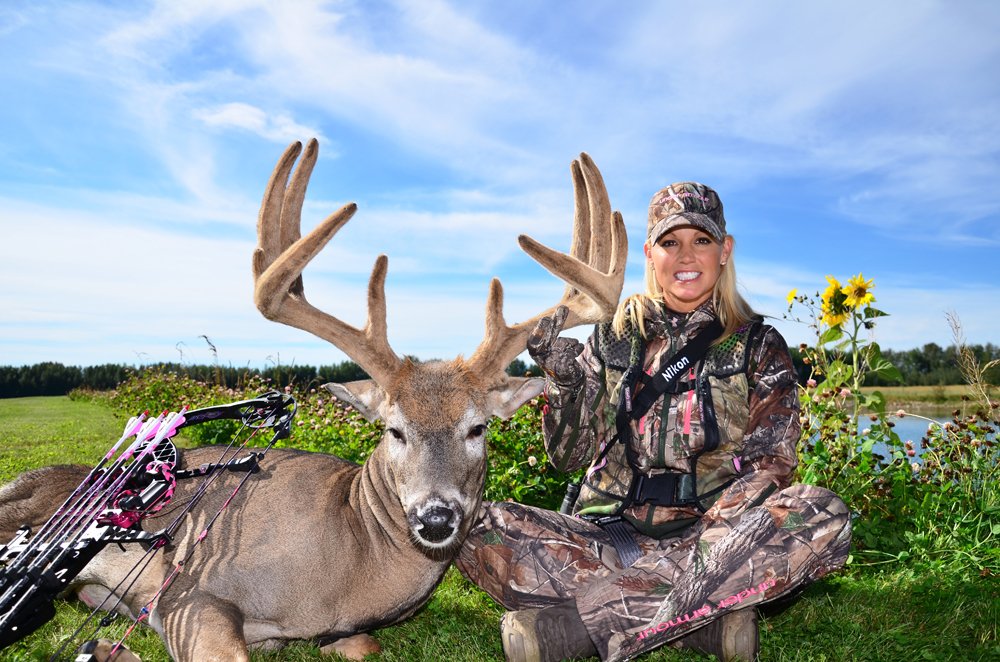Challenging Canada’s Giant Whitetails
By: Joe Byers
Alberta, Canada whitetails can exceed 300 pounds with antler sizes to match. If you’re considering hunting this world class trophy, here’s what you need to know.
Whitetail deer are the most populous big game animal in America, so one might ask “Why travel to Canada to hunt one?” Antler size is a key factor, and enormous antlers fill the dreams of many hunters. Size matters in the frigid north, as the brutal winters of Alberta cull all but the strongest of deer.
Ron Nemechek has been a professional whitetail guide in Alberta for forty years and believes he’s figured out the best ways to take a giant buck. “I hunt the fringe areas,” says Nemechek,” because whitetails are edge animals.” The savvy Canadian resident hunts the fringes of farmlands and the province, and you should too.
Nemechek is one of hundreds of outfitters who exhibit at the annual Safari Club International Convention, and I talked with him for his ideas about deer hunting in Alberta
Monster Ag Fields
Ron Nemechek has been an Alberta whitetail guide for 40 years and knows his stuff
Alberta is mostly farm country, similar to U.S. states like Iowa or Kansas, yet the northern section of this agricultural land butts up to the boreal forest which extends for hundreds of miles. I took one of my largest bucks in this region, but it took advice from locals for me to succeed.
Alberta ag fields can be enormous, and my outfitter typically drove hunters to stands in his pickup. I asked him to drop me of at the edge of the field, so I could walk the one-mile route in the dark. Once I was nearly there, I used rattling horns to bring a buck in from a half a mile. The buck came from such a distance, that at first sight I thought it was a coyote.
Tiffany’s Big Buck
Tiffany Lakosky took this 170+ buck in Alberta.
Tiffany Lakosky took a buck that scored over 170 from a tree stand on the edge of an ag field. Although this is a standard tactic, Nemechek also recommends posting one hundred yards away from the field and into the woods to catch bucks that are too wary to emerge in daylight.
Nemechek believes that two pieces of technology have dramatically changed deer hunting in Alberta. “Trail cameras have made a huge difference in an outfitter’s ability to read which bucks use specific trails. Especially, when hunting the edge of a field, it’s important to predict the exact entrance point,” he says.
Thermal imaging is the second technology that makes a difference. “Once you blow deer from a field their patterns will change,” Nemechek says. “It does no good to hunt a morning stand if deer see you on the way in. Likewise, with an evening stand, you need an exit strategy. If a buck entered a field too far from your stand, be prepared to leave so that you don’t spook it.”
Rifle Hunting the Rut
David Blanton hunted Alberta with Nemechek and took this great buck.
Alberta’s rifle season runs the full month of November. Some outfitters divide their hunts into four segments, yet Nemechek prefers to hunt the last three weeks of the month to capitalize on the peak of the rut. “The truth never changes, whether warm weather, snow, or rain,” he says. “It doesn’t make a difference. Our deer breed between eight and ten of November. Always by the tenth, you will see activity.”
Nemecheck breaks down the season as follows. The first week of the season, bucks are running scrapes. While during the second week, deer go from no rut to full-blown rut followed by ten days of peak rut. That ten-day period of peak rut is November 10th through the 20th. After then, the rut begins slowing down, and the same number of bucks are finding around twenty-percent of what’s out there. You are certainly not going to see as many deer, but you could see half a dozen bucks on one doe the later you go into the season. Even by the end of November deer are still cycling. Sometimes they continue up to Christmas.
False Rut Perceptions
This huge archery mule deer was taken with Bearpaw Outfitters.
Nemechek doesn’t believe that breeding cycles change, only the conditions of the period. “Hunters often say, ‘It was a slow rut, and I didn’t see many deer.’ If it’s a warm year with lots of feed, you must look at things differently. In years of good weather and abundant food, does are scattered and bucks need to move a lot. It may seem slower. When people think of a good rut, it’s so cold that the best feed will concentrate does. The bucks will be in those spots, and you’ll see lots of them. It doesn’t change in our back woods or yours.”
Now is the Time
Nemechek, left, poses with a client buck. He operates under North River Outfitters.
If you are looking for that buck-of-a-lifetime, hunting in Canada can dramatically boost your odds of taking a giant.
In 2023, you can still hunt “pandemic bucks” in Canada. With the border closed for two years, many deer that would have fallen to American hunters were granted clemency for two seasons. Many of those deer still roam the Canadian wilderness and offer savvy hunters the trophy of a lifetime.
Have you had a great out experience? Join Global Outdoors and write a review to tell everyone about it! We’re building the home for trusted reviews of outdoor experiences, outfitters, and guides.







